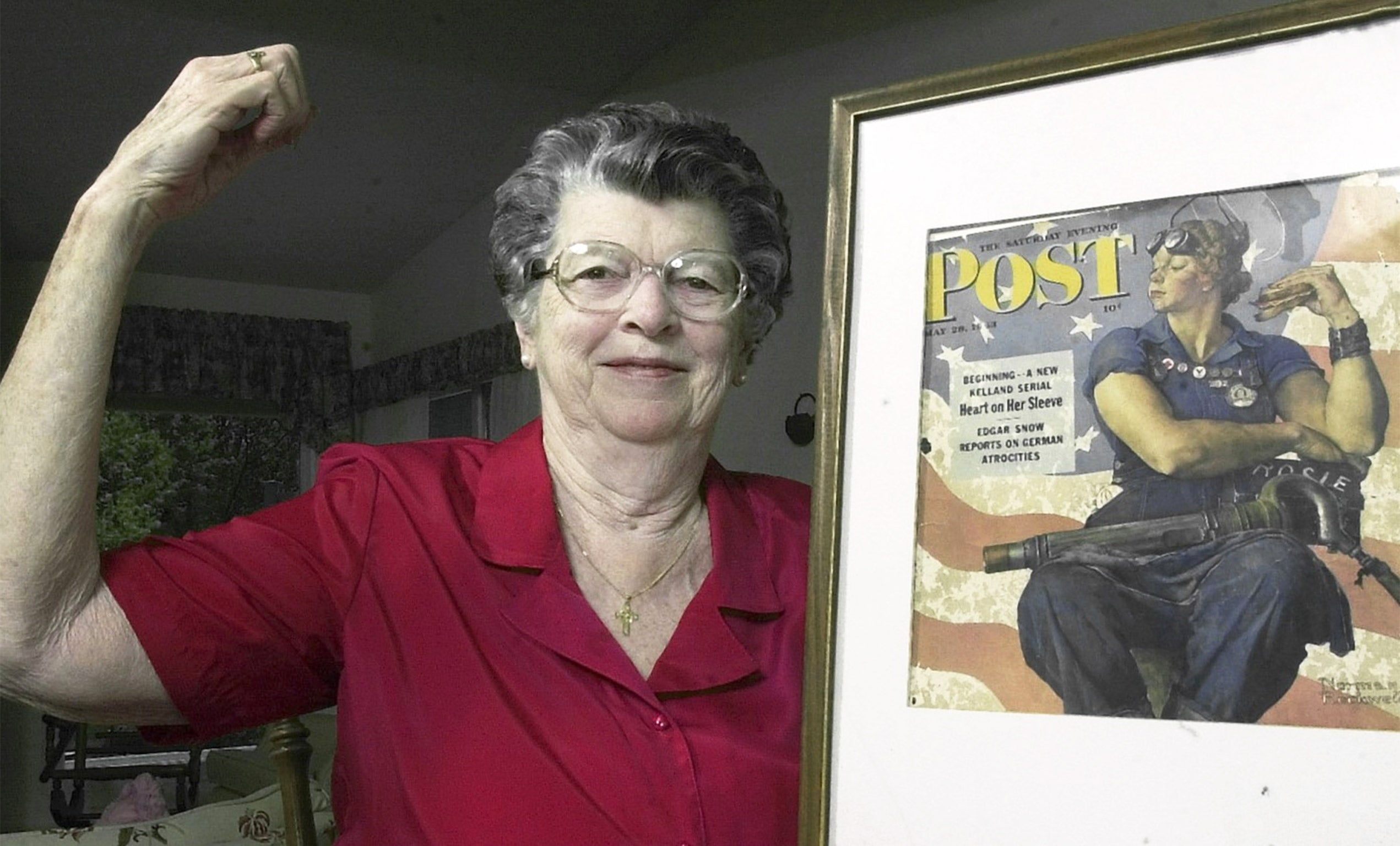Mary Doyle Keefe: Telephone operator who became the model for Norman Rockwell's 'Rosie the Riveter' painting
Keefe was just 19 when she posed for the painting, which appeared on the cover of the Saturday Evening Post

Your support helps us to tell the story
From reproductive rights to climate change to Big Tech, The Independent is on the ground when the story is developing. Whether it's investigating the financials of Elon Musk's pro-Trump PAC or producing our latest documentary, 'The A Word', which shines a light on the American women fighting for reproductive rights, we know how important it is to parse out the facts from the messaging.
At such a critical moment in US history, we need reporters on the ground. Your donation allows us to keep sending journalists to speak to both sides of the story.
The Independent is trusted by Americans across the entire political spectrum. And unlike many other quality news outlets, we choose not to lock Americans out of our reporting and analysis with paywalls. We believe quality journalism should be available to everyone, paid for by those who can afford it.
Your support makes all the difference.Mary Doyle Keefe was the model for Norman Rockwell's celebrated 1943 painting "Rosie the Riveter" that symbolised the millions of American women who went to work on the home front during the Second World War. Keefe grew up in Vermont, where she met Rockwell and posed for his painting when she was a 19-year-old telephone operator.
The painting was on the cover of the Saturday Evening Post on 29 May 1943. Although Keefe was petite, Rockwell's Rosie had large arms, hands and shoulders. The painting shows the red-haired Rosie in blue overalls sitting down, with a sandwich in her left hand, her right arm on top of a lunchbox with the name "Rosie" on it, a rivet gun on her lap and her feet resting on a copy of Mein Kampf. The entire background is a waving American flag.
Rockwell modelled her body on Michelangelo's Isaiah, on the ceiling of the Sistine Chapel, though he is also thought to have based her arms on those of Joe Louis. Keefe, who was never a riveter, was paid $5 for each of two mornings she posed for Rockwell and his photographer, Gene Pelham. "They called me again to come back because he wanted me in a blue shirt and asked if I could wear penny loafers," she recalled.
Rockwell wrote to her 24 years later calling her the most beautiful woman he had ever seen and apologising for the hefty body: "I did have to make you into a sort of a giant." The painting was later used to sell war bonds; sold at auction for $4.9m in 2002, it is now part of the collection at the Crystal Bridges Museum of American Art in Arkansas.
DAVE COLLINS
Mary Louise Doyle, telephone operator: born Bennington, Vermont 3 July 1922; married Robert Keefe (four children); died Simsbury, Connecticut 21 April 2015.
Join our commenting forum
Join thought-provoking conversations, follow other Independent readers and see their replies
Comments